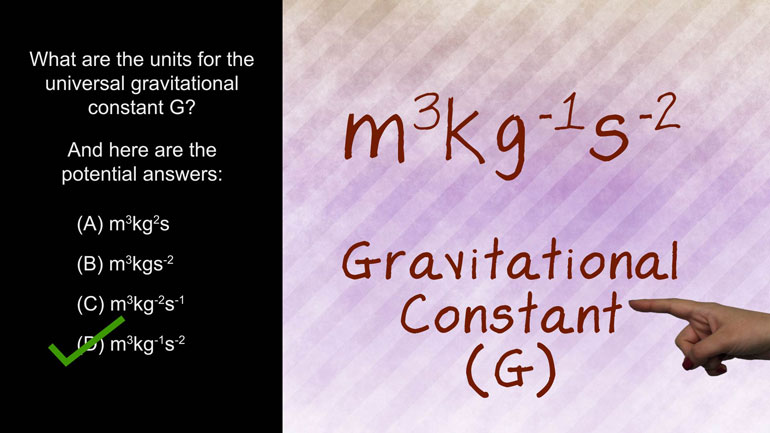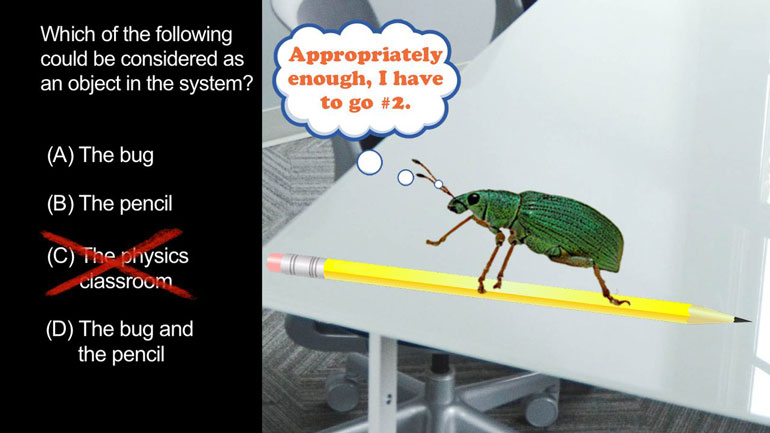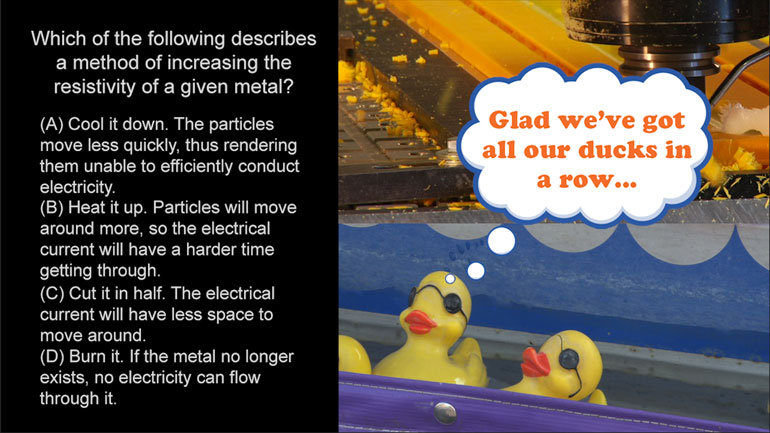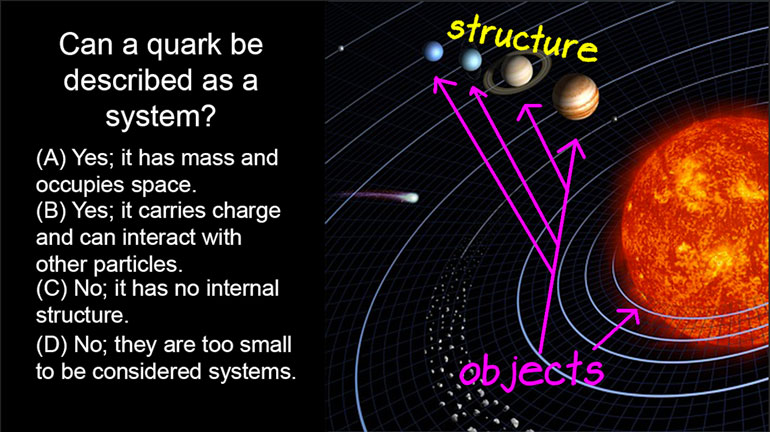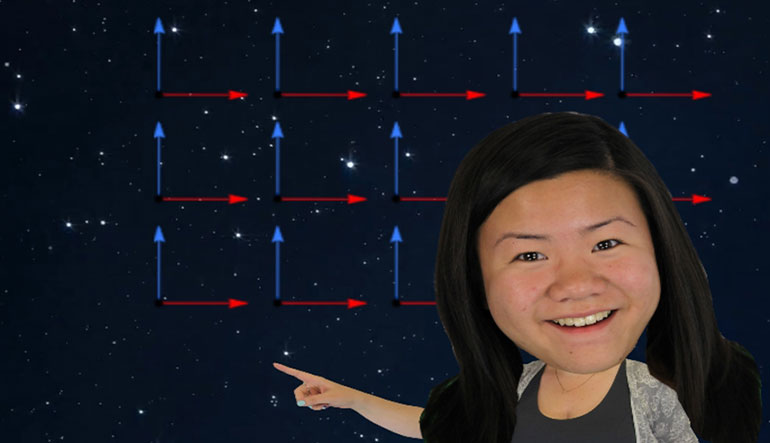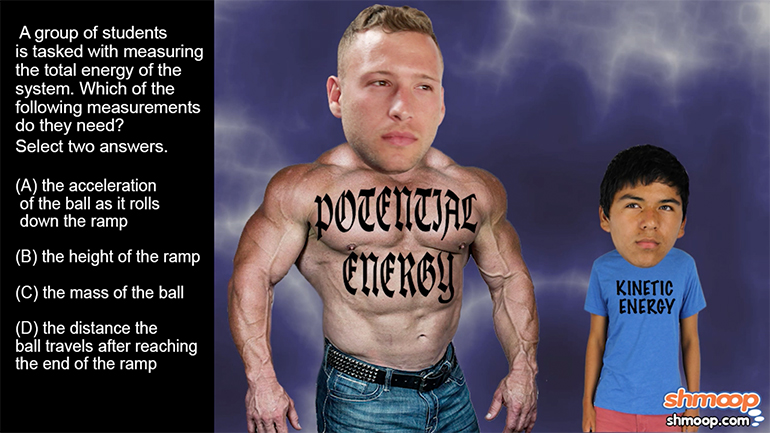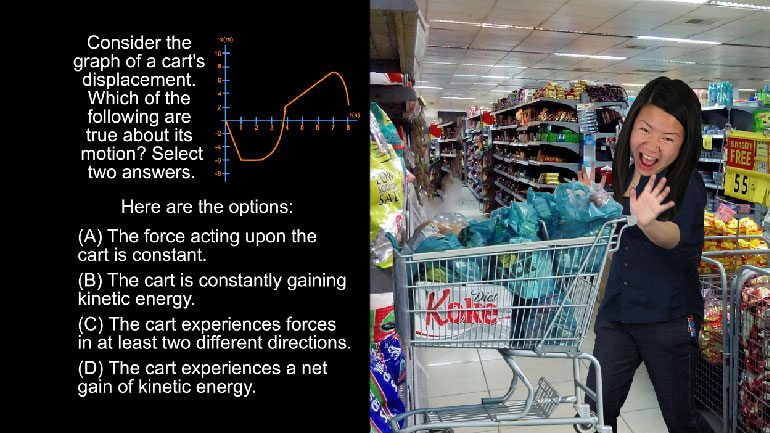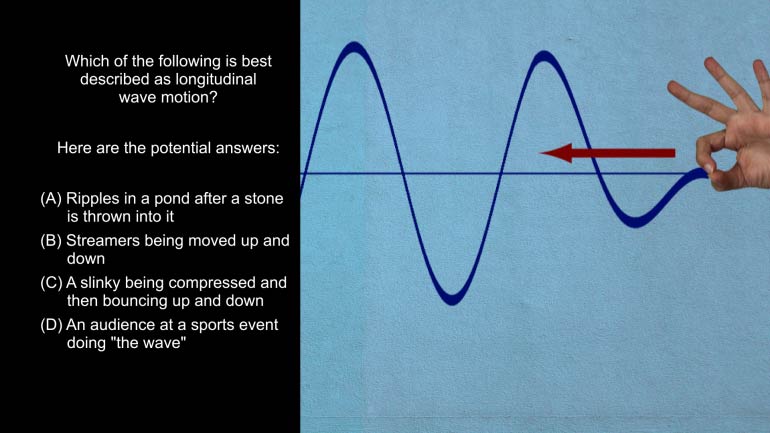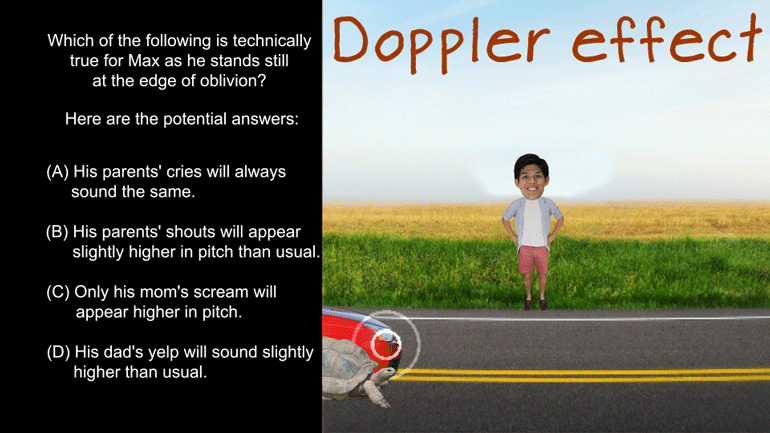ShmoopTube
Where Monty Python meets your 10th grade teacher.
Search Thousands of Shmoop Videos
Relating knowledge across scales, concepts, and representations Videos 10 videos
Don't let this question about gravitational forces get you down! Yeah, yeah...that was an easy joke. You get what you pay for.
AP Physics 1: 2.1 Fields in Space. What are the units for the universal gravitational constant G?
AP Physics 1: Properties of Objects and Systems Drill 1, Problem 1. Which of the following could be considered as an object in the system?
AP Physics 1: 3.4 Properties of Objects and Systems 200 Views
Share It!
Description:
AP Physics 1: 3.4 Properties of Objects and Systems. Which object experiences the greatest acceleration?
Transcript
- 00:03
Here's your Shmoop du jour brought to you by gravity. It's one
- 00:07
of the fundamental forces of the universe and also the force that's most [Woman walking down steps falls overs]
- 00:10
likely to make us look silly in public.. A bowling ball, a feather and a marble are
- 00:16
dropped from a given height within a vacuum chamber. which of those objects
- 00:21
experiences the greatest acceleration? And here are the potential answers
Full Transcript
- 00:26
(Mumbles)
- 00:28
All right, let's imagine what would actually happen
- 00:31
in this situation we'd probably begin climbing to the top of the Empire State [Man climbing up huge staircase]
- 00:36
Building and well on second thought we'd take the elevator (laughs)
- 00:40
Come on we're carrying a bowling ball here people. Plus it's like a bajillion flights of stairs.
- 00:44
Anyway at the top we'd go to the observation deck and pull the bowling
- 00:48
ball the marble and the feather out of the bag, we look around and make sure
- 00:52
there's no security around... don't forget that and then we'd give them a shove.
- 00:56
Now what would happen well the marble and the bowling ball would drop right away, the [Marble and bowling ball have already landed and the feather is floating down]
- 01:01
feather well it won't be going quite so fast. But that's not because gravity is
- 01:05
slower for the feather after all gravity is a constant the reason the feather
- 01:10
falls slower than the bowling ball or the marble is because the feathers shape
- 01:15
and mass make it more susceptible to air resistance like its densities different.
- 01:20
As all of these objects fall gravity is pulling them down and the air is pushing
- 01:25
back against them, but in a vacuum chamber with no air at all, all three of
- 01:30
these things will fall at the exact same rate. Now the bowling ball is definitely [Objects are dropped in a vacuum chamber]
- 01:34
falling with more force which will be obvious when it hits the ground, splat..
- 01:38
But the acceleration they all experience is the same: 9.8 meters per second squared
- 01:43
here on earth that's the acceleration of gravity for feathers, for bowling balls
- 01:48
and for everything else. So the correct answer here is D the acceleration is equal
- 01:53
for all of the objects and we don't have to worry about air resistance in a
- 01:57
vacuum. Oh and please remember that whole dropping things from the top of the [Police have the man in handcuffs]
- 02:02
Empire State Building scenario was just to show how things work, we shouldn't go
- 02:07
around dropping things off of building even if it's for science... [Bowling ball lands on securities head]
Related Videos
AP Physics 1: 2.5 Changes and Conservation Law. At what point(s) in this situation is energy lost in any form?
AP Physics 1: 1.4 Waves. Which of the following is technically true for Max as he stands at the edge of oblivion?
AP Physics 1: 1.4 Changes and Conservation Laws. Find the current across R2.
AP Physics 1: 2.4 Changes and Conservation Laws. Which of the following circuits should the students use?
AP Physics 1: 1.5 Waves. What can possibly occur when the two waves reach each other?

